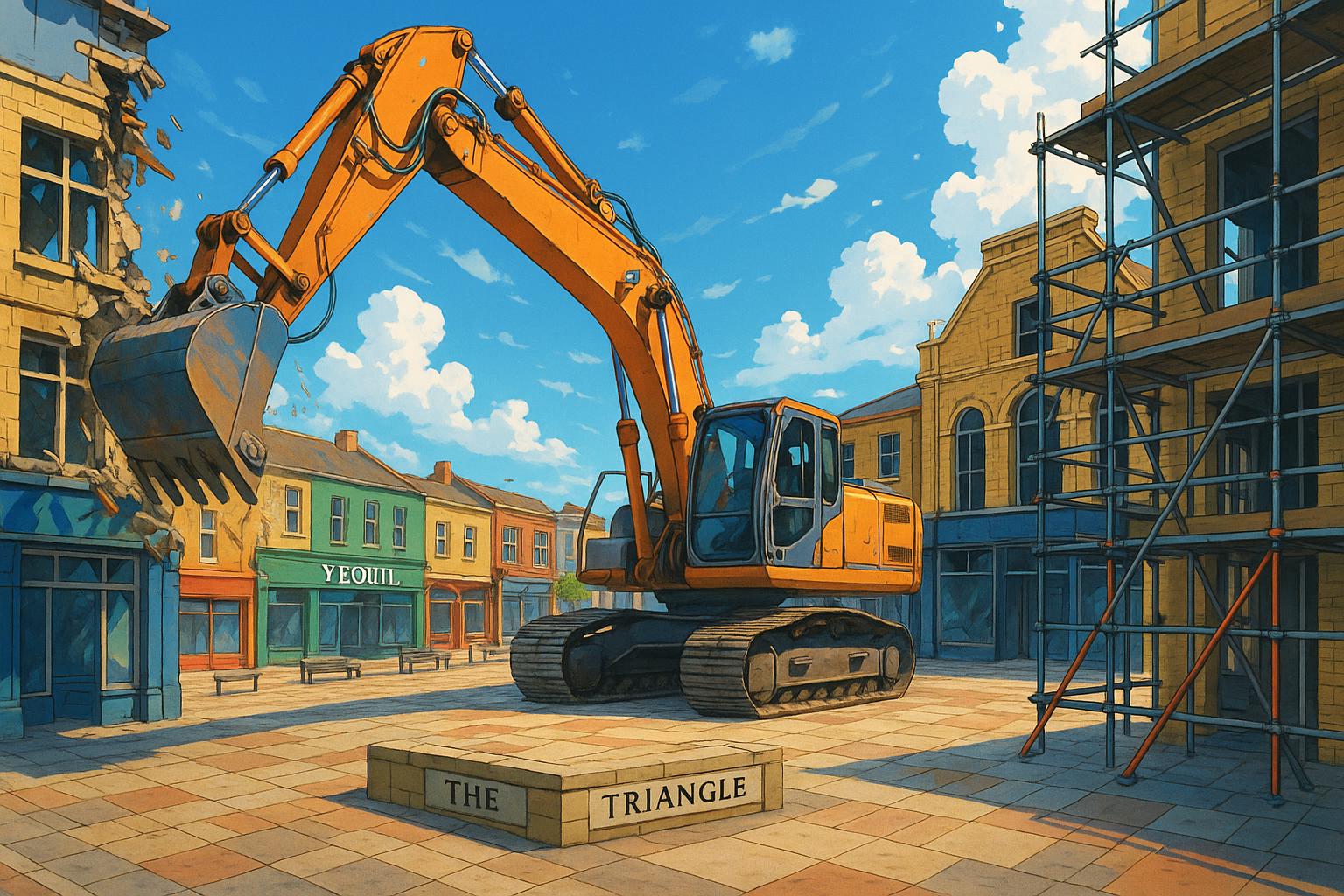As I stepped into the heart of Yeovil earlier this week, the sound of machinery echoed through the streets as an excavator meticulously dismantled an ageing building. What once might have seemed a mundane sight became emblematic of the town's larger journey toward rejuvenation. In the midst of ongoing demolition, the new pedestrian-friendly area known as The Triangle stood as a focal point of transformation, with its abandoned water feature and dormant jumbotron screen highlighting both the town's ambitions and the challenges ahead.
The Yeovil Refresh project, boasting a significant budget of £24 million, seeks to inject vitality into the town centre, focusing on enhancing not only green spaces but also creating new job opportunities and driving tourist activities. According to the council's projections, the initiative is expected to revitalise the local economy while making Yeovil a more inviting place for residents and visitors alike. The Triangle itself has been designed to accommodate an amphitheatre for performances, art displays, and community events, a concept that emerged from consultations with local residents who expressed their desires for a more vibrant public space.
However, the ambitious plans for Yeovil are accompanied by a sense of urgency. Many locals have voiced their dissatisfaction with the extended construction periods, noting that the prevalent scaffolding has marred the streets for far too long. As one resident put it, “People are a bit annoyed about this scaffolding being up so bloody long!” Despite these frustrations, there remains a glimmer of hope; Yeovil was recently recognised as Somerset’s most affordable property hotspot, suggesting that the town holds some potential for growth and investment.
Yet, beneath the surface of optimism lies a stark reality. The town grapples with a host of pressing issues, including a latest report indicating a staggering 68% increase in crime rates compared to the regional average. This unsettling statistic casts a shadow over the regeneration efforts, particularly as resources become strained with the temporary closure of the Special Care Baby Unit and maternity services at the local hospital, as highlighted by concerns raised from the Care Quality Commission.
Indeed, the Yeovil Refresh project has not been without its detractors. Critics have described the initiative as merely an “expensive paint job” that has suffered from rising costs and delays, with expenses ballooning by an additional £4.2 million since its inception. As ongoing construction work continues to disrupt daily life and business, many residents regard the town centre's current state as an “eyesore,” longing for the project to come to fruition.
Nevertheless, efforts to breathe new life into Yeovil persist. With the demolition of Glover's Walk shopping centre already underway, plans include the development of mixed-use spaces that integrate retail and affordable housing. This part of the regeneration is complemented by £4.8 million in government funding, illustrating a broader commitment to revitalise the area.
As the completion of the project is projected for the end of Summer 2024, all eyes will remain on Yeovil. The local community’s patience is being tested as significant changes unfold, and the outcome of these endeavours could ultimately determine whether this town becomes a model of revitalisation or continues to grapple with its challenges.
Reference Map
- Paragraph 1: [1], [2]
- Paragraph 2: [1], [3]
- Paragraph 3: [1], [4]
- Paragraph 4: [1], [5]
- Paragraph 5: [1], [6]
- Paragraph 6: [1], [7]
Source: Noah Wire Services
